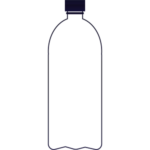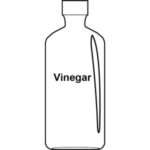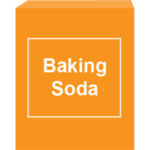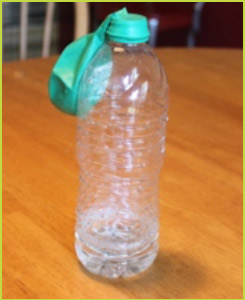Fun with Fizz
What is a chemical reaction?
A chemical change is a change in which one or more new types of matter form. In a chemical change, materials react with each other. That means they combine in new ways to form other materials. Some chemical changes like burning are easy to recognize while others are much subtler. Some chemical reactions cause gases to be given off. Adding baking soda to vinegar does just that. The bubbles you will see are a new substance, a gas called carbon dioxide! Once a chemical change has occurred, it can never be undone.
The Experiment
Create and observe a chemical reaction happen right before your eyes! In this activity, you will prove to yourself and family members that balloons are not “empty” but filled with air. Air is a gas and gasses have mass and take up space just like solids and liquids. They are just much harder to observe sometimes because they are usually invisible. Watch what happens to your balloon and see if you can explain where the gas came from!
Materials
Empty soda or water bottle

1/2 cup vinegar

Baking soda

Paper funnel

Small balloon

Directions
STEP 1
Prepare your workspace. Choose the table or countertop you wish to place your bottle on.
STEP 2
Blow up your balloon and then let all the air out. Do NOT tie the balloon. This allows the balloon to stretch a little, making the next step a little easier.
STEP 3
Use the piece of paper as a funnel. To make the funnel, place the paper in front of you and take one of the far corners and roll it towards the center. Bring the other far corner over the top so that it wraps around it.
This should create a general cone shape. Do not crease it. It does not have to be perfectly shaped, just so it helps you get the baking soda into the balloon. Place the funnel in the mouth of the balloon and pour in the baking soda. Remove the funnel and place to balloon aside.
STEP 4
Pour the vinegar into the bottle. Do not put the lid on the bottle.
STEP 5
Carefully place the mouth of the balloon onto the rim of the bottle, making sure no baking soda spills into the vinegar.

STEP 6
Once the balloon is secure around the bottle, pick the balloon up so that the baking soda falls into the vinegar!
STEP 7
Watch and observe.
STEP 8
Clean up. Do not eat or drink any part of this experiment. You can reuse the balloon.
Dinner Talk
- What was the coolest part of the experiment? Why?
- What happened when the baking soda and vinegar mixed?
- What happened to the balloon? How?
- Explain where the gas came from.
- What new substance was created?
- Talk about solids, liquids, and gases.
Extra Enrichment
- Try various activities with vinegar and baking soda and see if the reaction always happens. Does anything different ever occur?
- Write about it using this sentence starter: I put baking soda in vinegar and…



